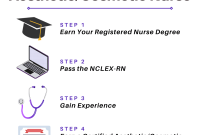What Classes Do You Need To Become A Kindergarten Teacher – There are many different entry points and pathways into a college mathematics curriculum. Read these notes first, look at the math pathway diagram at the end of this page, and finally discuss your options with your advisor. Our math department would also be happy to discuss your options. We look forward to meeting you!
Some students start with a statistics course such as Math 58, or an advanced data analysis course if they have previously taken AP Stats. Some students start with math grades above 60.
What Classes Do You Need To Become A Kindergarten Teacher
Regardless of your math background, you can usually move on to the next course or spend some time brushing up on previous material. Factors that may influence your decision include your confidence level, schedule intensity, and academic goals.
What Grade Do You Need To Pass A College Class?
Math 30 and Math 31 are calculated for the first and second semesters, respectively. Math 30 covers similar content to AP Calculus AB, and Math 31 matches AP Calculus BC, but in each case the pace/depth may be higher than in high school. In addition to the traditional Math 31 course, we teach two challenging options: Mathematics 31S, which emphasizes applications to science, including life and social sciences, and Mathematics 31H, which rebuilds calculus concepts from the ground up and explores their connections to other areas. of mathematics. Mathematics such as number theory.
There are three ways to introduce multivariable calculus in college. You can take Mathematics 32, a regular calculus course, and then take Mathematics 60 and Linear Algebra from this course. If you are interested in using mathematics to solve real-world problems or want to learn more about applied mathematics, take Mathematics 32S, followed by Mathematics 102 (Differential Equations) and Mathematics 183 (Mathematical Modeling), with Mathematics 60 taken later. can. hour. Finally, for example, if you plan on taking a significant number of math courses as a major, I would recommend starting with Math 60 (Linear Algebra) and then Math 67 (Vector Calculus – a multivariable calculus class with linear algebra). prerequisite).
Mathematics 58 (Introduction to Statistics) and Mathematics 58B (Introduction to Biostatistics) are introductory-level statistics courses and require Calculus I as a prerequisite. If you have completed a statistics course in another department, such as economics or psychology, you should not use 58 or 58B. It’s possible. If you have taken AP Statistics, have a good understanding of the material, and are computer savvy, the Advanced Statistics course may be right for you. An advanced statistics course (numbered 15X) that requires an introductory statistics course (e.g., AP Statistics, Math 58 or 58B, or another statistics course) is offered each semester. It may make sense to take an advanced course after you have a little more knowledge of math or a little more experience in economics or science.
Math 1 (Mathematics, Philosophy, and the Real World) includes high school algebra and geometry as prerequisites and combines readings in history, mathematics, and philosophy. This activity is an interesting choice for students majoring in the humanities and anyone who wants to place mathematics in a humanities context. Math 1 is taught at Pitzer for several years.
How To Become A Teacher In Ohio
The Claremont Colleges have joint math programs and students often take math courses at other campuses. However, for introductory courses, there are two advantages to staying on your home campus. Most math courses emphasize collaboration, and many rely on it. It may be easier to find a supportive group of peers to work with, and you may feel more comfortable attending evening classes with a mentor on campus. It may also be helpful to get to know your professors when you are in high school. Whether you’re looking to earn college credit in high school, study a subject you’d like to study in college, or are preparing an impressive college application, many students enroll in Advanced Placement (AP) or International Baccalaureate courses. I have a hard time doing it. (IB). We are here to help you understand the pros and cons of each program and how to achieve your big goals using both training paths.
AP programs are administered primarily by the College Board in the United States and Canada. Established in 1955, the program provides students with the opportunity to take college-level courses in high school and also earn college credit at participating colleges based on AP exam scores.
Schools can offer AP classes without issuing an AP diploma, but there are two types of diplomas students can earn. The AP Capstone Diploma focuses on seminars and research-style classes and can be taken at participating schools, while the AP International Diploma is available to international and U.S. students who plan to travel abroad for additional study.
AP classes are widely known as a great way to challenge yourself and delve deeper into a specific topic. Each AP class also has a corresponding AP exam. You may also receive college credit based on your AP exam scores. Students looking to reduce their time in college or free up their schedule to take more classes may benefit from AP classes in core subjects if their future school accepts AP credit.
Gpa Is Equivalent To80% Or A B Letter Grade
Another major advantage of AP exams is that you don’t actually have to take a specific AP class to take the exam. So even if you’re homeschooled or your school doesn’t offer certain AP classes, you can still sign up for the test and try to demonstrate your knowledge in exchange for future credit.
AP is a very flexible program, and students at participating schools can choose to earn the AP Capstone Diploma or AP International Diploma (APID), but most schools do not require students to take specific AP classes to graduate. This means you can choose the course that is most interesting to you and your interests.
If your school does not offer all 38 classes, you can talk to your advisor about whether supervised independent study is right for you.
One of the biggest drawbacks of the AP program is that it is primarily geared toward students seeking admission to universities in the United States and Canada. This doesn’t mean students with international ambitions can’t benefit from AP classes!
What Should My First Math Class Be?
Colleges and universities in dozens of countries outside of the United States and Canada accept AP credits, but students planning to attend college abroad should check whether a potential school has an AP credit transfer policy before beginning AP classes.
While flexible programs are a positive for some students, one of the downsides of AP classes is that they don’t have to fit into a cohesive program. This means that while there are many different types of AP classes, including varying levels of depth and academic rigor within the AB (first year) and BC (second year) courses, it is not always possible to take both levels of a particular subject.
But what this means is that you can take AP courses and graduate with a great profile for future studies. Although the courses do not necessarily stack together as in other curricula.
Students seeking courses that last longer than a year or that focus on interdisciplinary connections between courses should consider whether AP is right for them.
Everything You Need To Know About Attending University Of Phoenix
The International Baccalaureate (IB) was founded in Geneva in 1968 and has been offered in the United States since 1975. There are over 2,000 IB programs in the United States and over 3,000 IB programs around the world.
Like AP classes, IB classes are rigorous and focus on developing the skills, knowledge, and mindset students need to succeed after high school.
Like AP courses, many universities around the world offer course credit if students perform well in IB courses and IB exams. But the benefits of IB classes start long before you graduate.
Although IB classes are already often more difficult than regular high school courses, the depth of IB subjects also varies.
A Guide On How To Sign Up For Coursera Courses For Free — Class Central
Students can study in depth over two years by taking standard and advanced courses in their preferred subjects. In fact, once you complete the IB Diploma there is almost always the option to progress to a higher level course.
Another advantage of IB classes is that students can choose from 57 classes instead of 38 AP classes.
One of the biggest advantages of IB classes is that you can take them as part of a single program called the IB Diploma Program (IBDP). The IBDP is offered by IB World Schools, and to be recognized you must offer specific IB classes and meet specific requirements set by the IB organization.
The IB Diploma prepares students to work in a challenging university environment and takes a holistic approach to schooling. The entire program focuses on the physical, intellectual, emotional and ethical development of students as well as academic achievement.
Weird And Wonderful Courses You Can Actually Study
IB’s holistic approach to education benefits students who want to challenge themselves academically.
What do you need to become a kindergarten teacher, what classes do you need to become a kindergarten teacher, what classes do i need to become a kindergarten teacher, what classes are required to become a kindergarten teacher, classes you need to take to become a teacher, what degree do you need to become a kindergarten teacher, what classes to take to become a kindergarten teacher, what classes do you need to become a teacher, what classes do i need to become a teacher, what you need to become a kindergarten teacher, what degree do i need to become a kindergarten teacher, what do i need to become a kindergarten teacher




